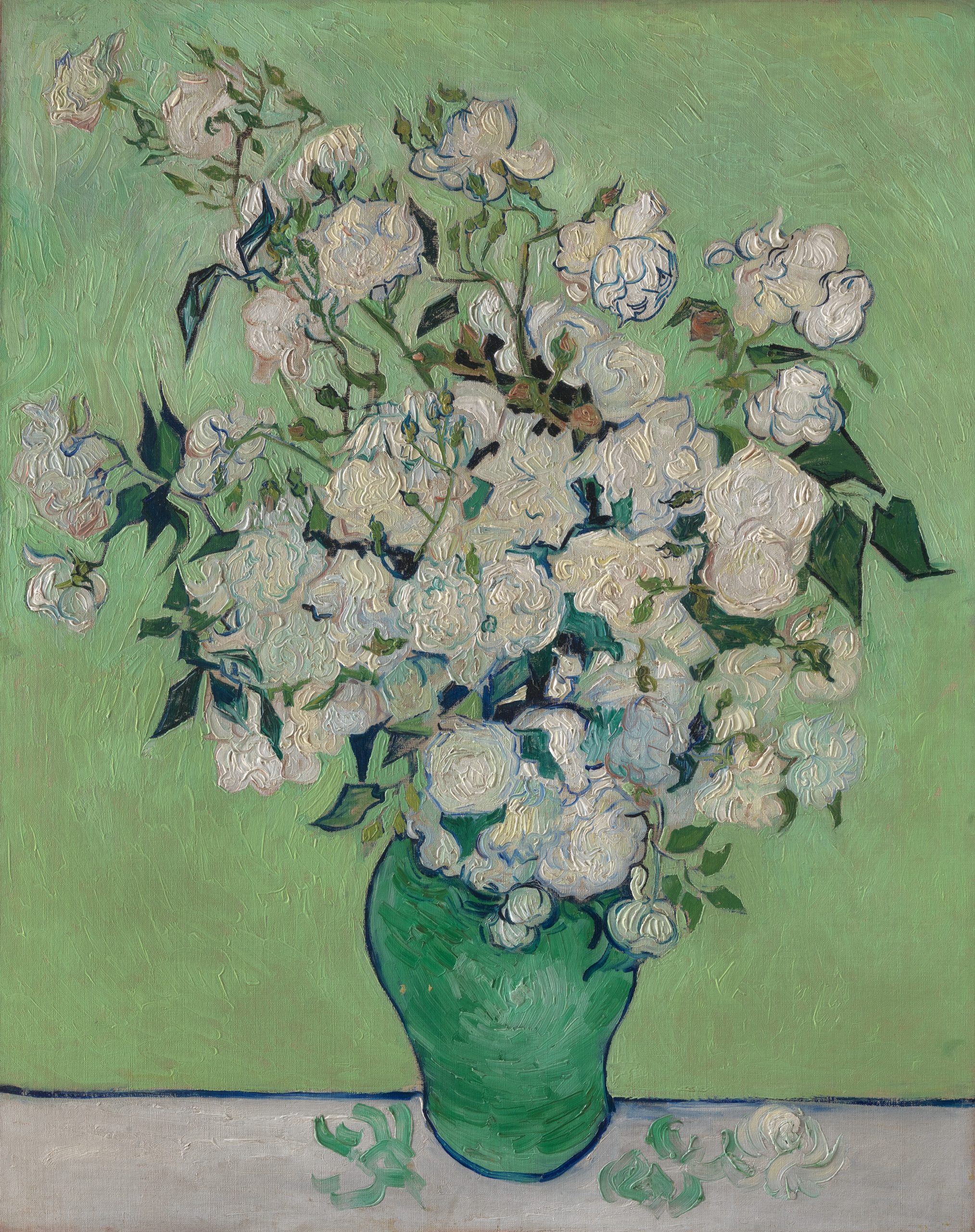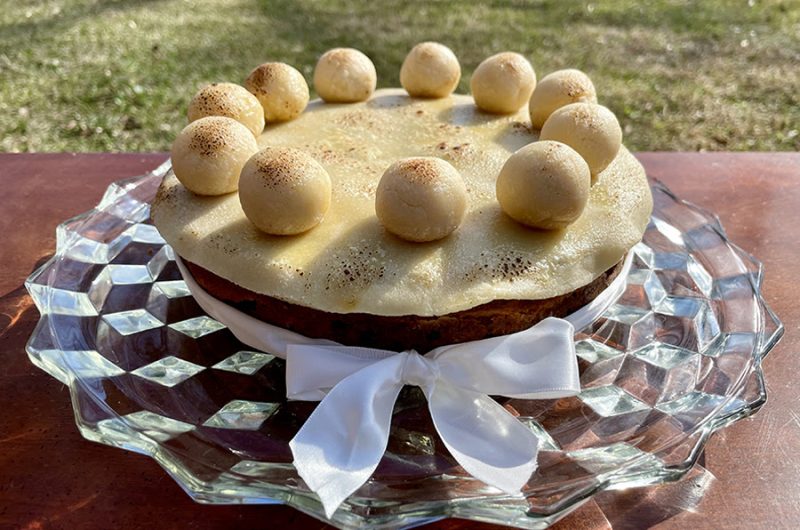
ABOUT THE ART
Vincent van Gogh, “Roses,” 1890, oil on canvas, 36 5/8 x 29 1/8 in., The Walter H. and Leonore Annenberg Collection, Gift of Walter H. and Leonore Annenberg, 1993, Bequest of Walter H. Annenberg, 2002, accession number 1993.400.5. New York. The Metropolitan Museum of Art.
Refreshment Sunday – Fourth Sunday of Lent
Sometimes you just need a break. The burdens of life can be wearisome, and burnout is common. Our forebearers knew that this was true even for good things like Lent. This season, with all its fasting and self-denial, can make even the most ardent believer fall exhausted. So, the church has designated a “Refreshment Sunday.”
Falling in the middle of Lent, Refreshment Sunday is a time to catch your breath and remember that Easter is coming. While it is not a Sunday for excessive excitement, it is a time to find your second wind. Some traditions designate this day by using pink as the liturgical color. Pink is a diluted purple (the color of Lent) and indicates that this Sunday is less Lenten than all the others. Some traditions, therefore, call the day “Rose Sunday.” Another name for the day is “Laetare Sunday,” meaning “rejoice,” which comes from the traditional call to worship (introit) from Isaiah 66:10.
The dish most associated with Refreshment Sunday is a Simnel Cake. This medieval recipe is a fruity and refreshing treat. It is iced with two layers of marzipan and topped with 11 marzipan balls to represent the 11 disciples who did not betray Jesus. Make your cake the day before so you can relax. Refreshment Sunday is a great Sunday to take a break. Don’t work in the yard, do laundry, or any of that kind of work. Instead, take a nap, read a book, or go for a stroll and be refreshed and ready for the rest of Lent. Easter is just around the corner!

Simnel Cake
Simnel cake is a traditional fruit cake that is commonly made in the United Kingdom and Ireland around Easter time. The cake is made with a rich fruitcake mixture of dried fruits and spices and is typically baked in a round shape. The cake is then topped with a layer of marzipan, which is traditionally decorated with 11 marzipan balls to represent the 12 apostles (minus Judas). Simnel cake can be served either warm or cold, and is often enjoyed with a cup of tea or as a dessert after a meal.
Keep the screen of your device on
Ingredients
- For the Marzipan
2 cups 2 (250g) Confectioners (Powdered) Sugar
2 cups 2 (250g) Almond Flour
2 2 Egg Whites, beaten
1 tsp 1 Almond Extract
- For the Cake
12 tablespoons 12 (1 1/2 sticks) unsalted butter
3/4 cup 3/4 + 1 tablespoon (compacted) (175g) light brown sugar
3 3 eggs, beaten
1 1/3 cup 1 1/3 (175g) all-purpose flour
Pinch Salt
1/2 teaspoon 1/2 pumpkin pie spice
2 2/3 cup 2 2/3 mixed raisins, golden raisins, and currants
1/3 cup 1/3 mixed peel, chopped
Zest from 1/2 lemon
2 tablespoons 2 Apricot Jam
1 1 egg for glazing, beaten
Directions
- For the marzipan, place the 2 cups (250g) Confectioners (Powdered) Sugar and 2 cups (250g) Almond Flour in a bowl. Add 2 beaten egg whites and mix until a soft consistency. Add the 1 tsp Almond Extract and knead for a few minutes or until the marzipan is smooth.
- Roll out a third of the marzipan and cut out an 8 inch circle. Cover and reserve the remainder of the marzipan.
- Preheat oven to 285°F.
- Grease, line the bottom with parchment, and then evenly flour an 8 inch cake pan (a cake pan with removable bottom also works well)
- Using a hand or stand mixer, cream the 12 tablespoons (1 1/2 sticks) unsalted butter and 3/4 cup + 1 tablespoon (compacted) (175g) light brown sugar together until pale and fluffy. Gradually add the 3 eggs until well incorporated.
- Using a wooden spoon, slowly add the 1 1/3 cup (175g) all-purpose flour, a pinch of salt and 1/2 teaspoon pumpkin pie spice.
- Finally, fold in the 2 2/3 cup mixed raisins, golden raisins, and currants, 1/3 cup mixed peel, and the zest from 1/2 a lemon.
- Pour half the mixture into the cake tin. Smooth the top and cover with the 8” circle of marzipan. Add the rest of the cake mixture and smooth the top. (Leave a slight dip in the center to allow for the cake to rise)
- Bake for 1 hour and 45 minutes. (Check on the cake after 1 hour and 30 minutes by inserting a skewer in the middle. When the skewer comes out clean, it is ready.)
- Remove from the oven and cool on a wire rack.
- Once cooled, brush the top of the cake with the 2 tablespoons of Apricot Jam.
- Divide the remainder of the marzipan in half. Roll out a 8” (or slightly larger) circle to cover the top of the cake with one half and form 11 small balls with the other half.
- Place the circle of marzipan on the jam glaze and set the balls round the edge.
- Brush the cake topping with a little beaten egg.
- Using the broiler setting of your oven (or using a kitchen blowtorch) brown the marzipan on the top. (It only takes a few minutes to brown, so watch closely)